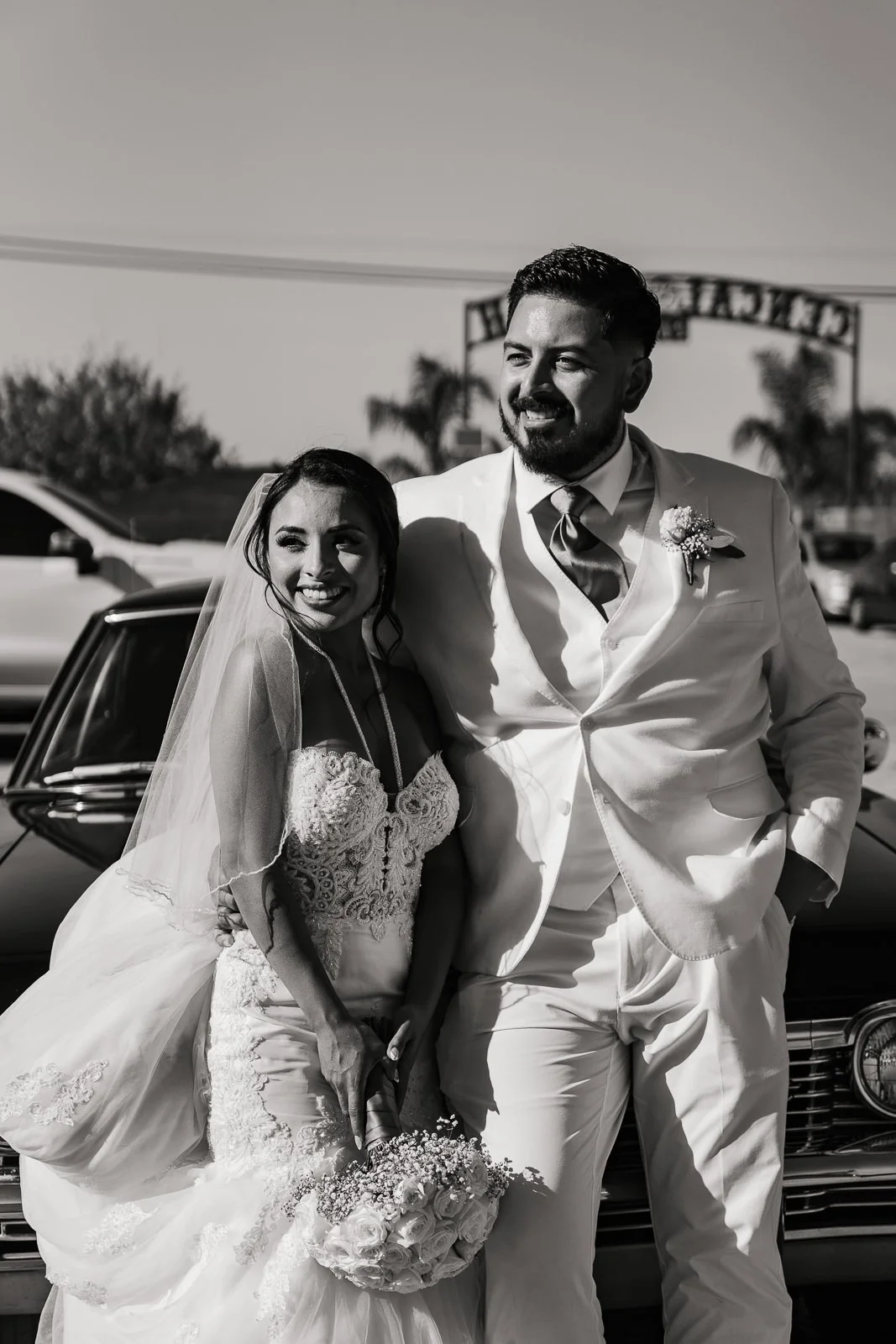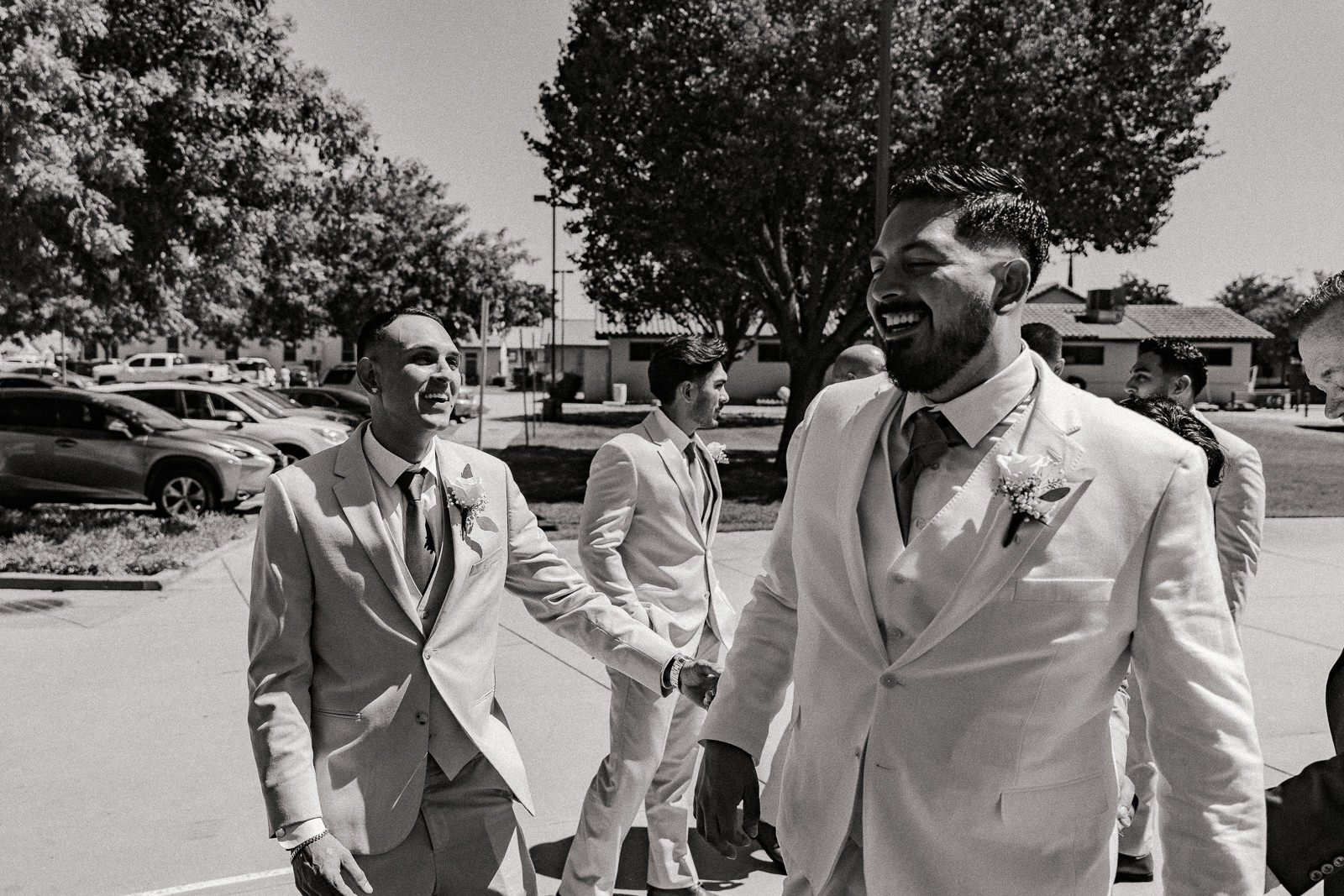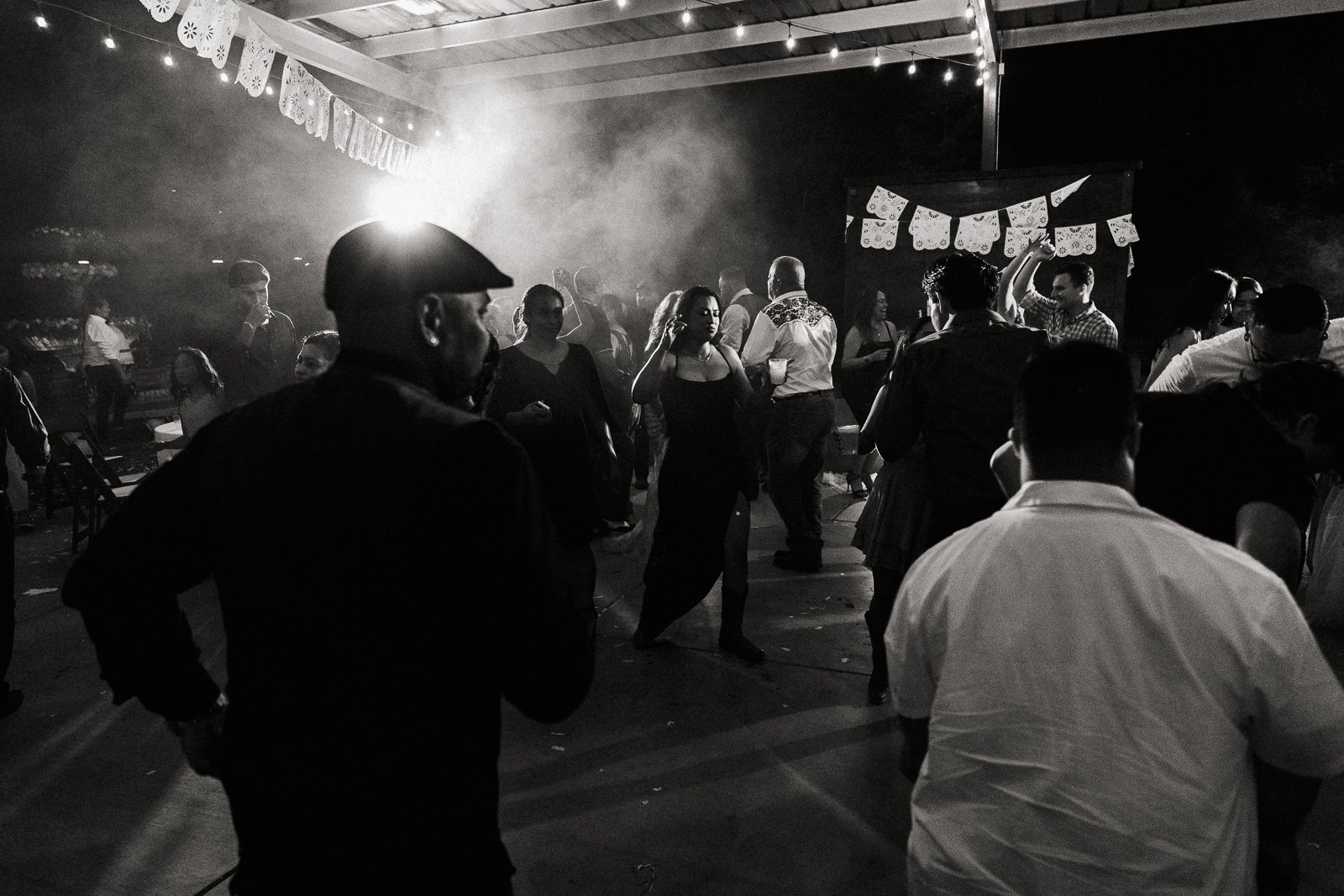Timeless Elegance: The Impact of Black and White Photography in Weddings
A moment shared by a couple during their wedding portraits, captured in black and white exudes a timeless and nostalgic feeling.
In an era dominated by vibrant digital photography, where colors leap off the screen and edits can make sunsets more radiant than reality, the timeless allure of black and white photography endures. Particularly in wedding photography, black and white imagery holds a unique power—one that transcends trends and evokes emotions deeply tied to nostalgia, intimacy, and drama. Stripped of color, these photographs communicate a story that resonates universally, bringing the focus to the relationship of the couple and the emotions of their day. Let’s explore why black and white wedding photography continues to captivate couples and photographers alike.
Dramatic Impact Through Simplicity
Black and white photography is synonymous with drama. Without the distraction of color, the interplay of light, shadow, texture, and form takes center stage. This emphasis allows photographers to craft striking compositions that evoke raw emotion and intensity.
For instance, a couple silhouetted against a bright window or embraced under a moody sky can appear profoundly dramatic in black and white. The absence of color amplifies contrasts and highlights subtle details, such as the delicate lace of a wedding gown or the confident grip of intertwined hands. By reducing the visual complexity of a scene, monochrome creates a striking and impactful narrative.
The dramatic nature of black and white photography also enhances the storytelling of wedding moments. From the quiet exchange of vows to the exuberant joy of the first dance, these images invite viewers to feel the essence of each moment without being overwhelmed by extraneous details.
A Timeless and Nostalgic Aesthetic
A candid moment in which the groom is having a laugh with one of his groomsmen is beautifully captured through the medium of monochrome photography.
Black and white photography possesses an inherent timelessness. By removing color, these images transcend specific eras or fleeting trends, giving them a classic quality that ages gracefully over time. Unlike color photographs that may be influenced by changing editing styles or color grading trends, black and white images maintain a consistent aesthetic that never feels outdated. This is particularly meaningful for wedding photography, where couples aim to preserve their memories in a way that will remain as beautiful and emotionally resonant decades later as on the day they were taken.
Nostalgia plays a significant role in the emotional weight of black and white photography. Many people associate these images with family albums from generations past, where monochrome captured the most meaningful moments in an era when color photography was less accessible. These images tell stories of love, commitment, and heritage, creating a profound emotional connection between past and present. Incorporating black and white shots into a wedding album not only enhances its artistic appeal but also establishes a visual and sentimental bridge between generations. It allows couples to celebrate their union in a way that acknowledges history while embracing the beginning of their own new chapter.
Focusing on the Relationship
One of the most significant advantages of black and white wedding photography is its ability to draw attention to the couple and their relationship. By eliminating the distraction of color, the viewer’s gaze naturally gravitates toward expressions, gestures, and emotions. This is especially powerful in candid shots, where fleeting moments of genuine connection shine through.
The simplicity of black and white allows the love between the couple to take center stage. A glance, a laugh, or a tear is magnified in emotional impact when color is stripped away. For example, a black and white photograph of a couple holding hands emphasizes the tenderness of their bond, rather than the hues of their surroundings.
Additionally, monochrome photography excels in capturing the universal aspects of human connection. While the specifics of decor, attire, and venue may change, the love and commitment expressed in black and white are timeless and relatable to any audience.
Elevating Emotional Resonance
Weddings are inherently emotional events, filled with joy, love, and sometimes even bittersweet moments. Black and white photography amplifies these emotions by creating a sense of intimacy and focus. The simplicity of monochrome often feels more personal and evocative, stripping away distractions to reveal the heart of the moment.
A moment where the couple is enjoying time together in a vintage car that was used at the reception for photo-op.
A black and white portrait of a father walking his daughter down the aisle, for instance, feels deeply poignant. The viewer’s attention is drawn to the expressions on their faces and the significance of the gesture, unencumbered by the colors of the setting. Similarly, a tearful embrace between friends or a shared laugh during the reception gains an added layer of emotional depth in black and white.
Highlighting Artistic Expression
For photographers, black and white imagery offers a unique canvas for artistic expression. It challenges them to think differently about composition, lighting, and storytelling. When working without color, the photographer must rely on other visual elements to convey mood and meaning. This often results in creative and compelling shots that stand out in a wedding album.
The textures of a wedding day—the intricate embroidery of a dress, the rugged bark of a tree in an outdoor ceremony, or the polished gleam of a wedding ring—become more pronounced in monochrome. Photographers can use these elements to craft visually rich and evocative images.
Moreover, black and white photography often leans into the abstract, encouraging viewers to interpret and engage with the image on a deeper level. A blurred motion shot of the couple dancing or a close-up of hands exchanging rings gains an artistic quality that feels both modern and timeless.
A Balanced Approach
A shot taken during the reception of a wedding. The black and white nature of this photo lends it to being part of any era.
While black and white photography is undeniably impactful, it’s most effective when used in balance with color images. A well-curated wedding album benefits from a mix of both styles, allowing couples to celebrate the vibrancy of their day alongside the elegance of monochrome.
For example, color photographs can beautifully capture the lush greenery of an outdoor venue or the intricate details of floral arrangements. Meanwhile, black and white shots can highlight the emotional moments, such as a quiet embrace or a heartfelt speech. Together, these styles create a comprehensive and dynamic narrative of the wedding day.
Conclusion
Black and white wedding photography is far more than a stylistic choice; it’s a storytelling medium that enhances the timelessness, emotional depth, and artistic quality of a wedding album. By focusing on light, shadow, and emotion, monochrome imagery cuts through the noise to reveal the essence of a couple’s love and commitment.
Incorporating black and white photographs into a wedding album is not just about honoring tradition or creating drama; it’s about capturing the universal and enduring aspects of human connection. For couples and photographers alike, the power of black and white lies in its ability to turn fleeting moments into timeless memories—images that will be cherished for generations to come.



